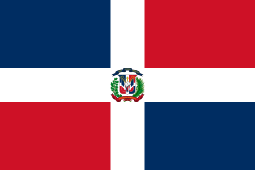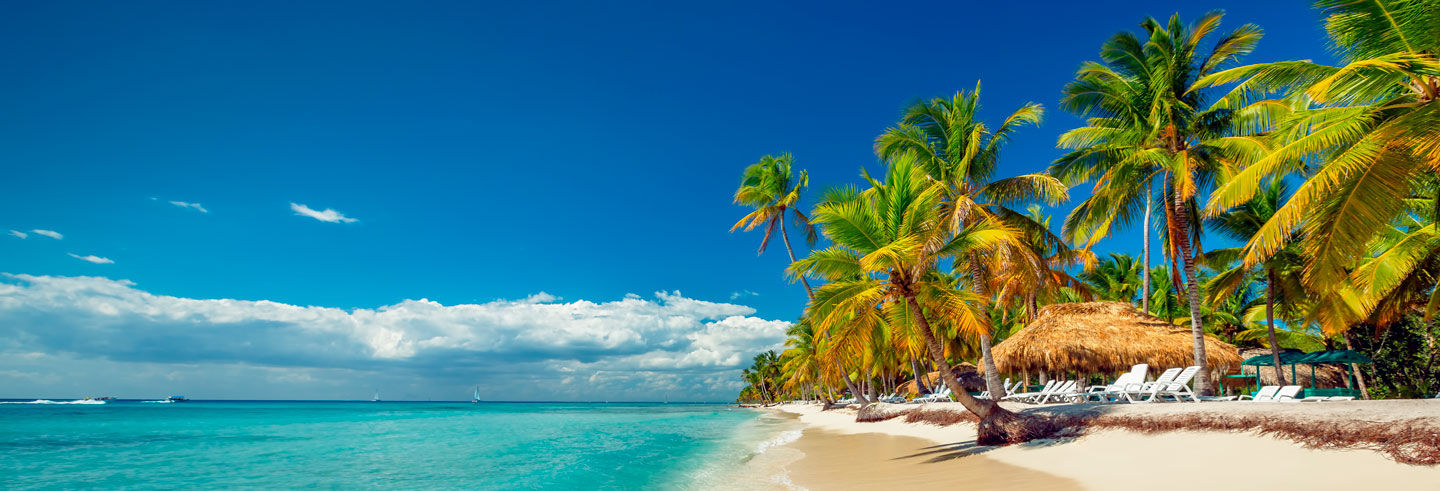Language/Spanish/Culture/Dominican-Republic-Timeline
Jump to navigation
Jump to search
Rate this lesson:
Historical Timeline for Dominican Republic - A chronology of key events
From discovery to exploration (1492 to 1504)[edit | edit source]
| Date | Event |
|---|---|
| 1492 | First voyage of the three carousels. August 24, start of the 4th voyage of Christopher Columbus. October 12, arrival in Guanahani, (San Salvador). November 29, separation from La Pinta. December 17, discovery of the island. December 9, name of the island Bohio (Hispaniola). December 25, grounding of Santa María, Guacanagarix and Christmas. |
| 1493 | January 5, Monte Cristi. January 56, reunion with La Pinta. January 31, in Samaná. January 23, return to Iraq. |
| 1494 | Santo Domingo de Guzmán, first city of the New World. Fort San Tomás. Caonabo, Alonso de Ojeda and Mosen Pedro Margarite. Other forts. Travel south to Cuba and Jamaica. Bartolomé Columbus. |
| 1495 | Prison and death of Caonabo. Massacre of Indians. |
| 1496 | Boil and Mosen Pedro Margarite return to Spain.Colomb leaves for Spain.Other forts.Expedition of Bartolomé Columbus to the south.Rebellion de Guarionex, Mayobanex. |
| 1498 | Roldán rebellion. Return of Columbus, Third voyage. New Isabela. Peace between Columbus and Roldán. |
| 1500 | Arrival of Comendador Francisco Bobadilla, prison of Columbus and his brothers. |
| 1502 | Arrival of the Comendador Nicolás de Ovando. Arrival of Columbus, fourth voyage. Hurricane. De Ovando transfers Santo Domingo to the west side. Beginning of the fortress and other constructions. |
| 1503 | Juán de Esquivel. Massacres of Indians. Expedition to Higüey. Death of Bohechio. Anacaona. |
| 1504 | Expedition to Jaragua, massacres. Foundation of cities. New expedition to Higüey. Columbus in Jamaica and then returned to Spain. |
Colonization (1504 to 1697)[edit | edit source]
| 1508 | First trapiches. Trade in slaves. First 15 cities emblazoned. |
| 1509 | Arrival of Diego Colomb. |
| 1519 | Enriquillo in Baoruco. |
| 1520 | Slave rebellion. |
| 1533 | Barrionuevo and Enriquillo. Peace. |
| 1535 | Death of Enriquillo. |
| 1543 | Alonso de Fuenmayor, beginning of the muralla. |
| 1586 | Government of Ovalle. Invasion of Francis Drake. |
| 1606 | Colony. Antonio Osorio, devastation. |
| 1625 | La Tortue, buccaneers, buccaneers. |
| 1655 | Chaves de Osorio and Bernardino Meneses and Bracamonte. Invasion of Penn and General Venables. Extension (improvisation of defenses). |
| 1673 | D'Oregón and Delisle make incursions by the north. D'Oregón returns to France. The French pass (de la Tortue) to tierra firme. Agreement between Poinci and Segura. |
| 1689 | D'Cussi invades Santiago and loots it. |
| 1691 | Sandoval and Castilla receive the support of Peréz Caro. January 21, Battle of the Limonade. |
The defeats of the metropolis (1697 to 1795)[edit | edit source]
| 1697 | Treaty of Ryswick between Spain and France. Reaffirmation of the occupation of the west by France. |
| 1714 | Attempt to invade Mr. Charité. Governor Pedro de Niela intimates the French. Application for title deeds of occupied land. |
| 1776 | Delimitation line between east and west. 1,500 French volunteers are sent to North America. |
| 1777 | Treaty of Aranjuez. We set the limits of the borders. |
| 1791 | Slave revolt in the colony of Saint-Domingue. Boukman and Toussaint Louverture (Voodoo in Bois Caimán.) |
| 1795 | Treaty of Basel between France and Spain. Spain cedes the eastern part of the island to France. By right Hispaniola becomes a French colony in its entirety, in fact the French government opts to let its inhabitants self-manage. |
From Franco-Haitian invasions to the Reconquest (1795 to 1809)[edit | edit source]
| 1802 | French expedition. To dismiss Toussaint Louverture, Bonaparte sends a fleet commanded by Leclerc, his brother-in-law. Kerversau takes Santo Domingo. Juan Baron in San Gil. Jean-Louis Ferrand takes the Cibao (all the North). |
| 1803 | Prison and death of Toussaint. |
| 1804 | January 1, Jean-Jacques Dessalines proclaims the Independence of Haiti. Constitution and flag of Haiti. |
| 1805 | Invasions of Alexandre Pétion and Henri Christophe. French defenses led by Ferrand. Juan Barón. Ausenac. Haitian withdrawal. Massacres, destruction and fires. |
| 1808 | Juan Sánchez Ramírez and the Reconquista (Reconquest). November 7, Battle of Palo Hincado. Ferrand dies. December 13, Santo Domingo becomes Spanish again. |
From La España Boba to Independence (1809 to 1844)[edit | edit source]
| 1809 | July 7, the English occupy Samaná. End of the French administration. Spanish Government |
| 1818 | March 19, in Haiti, death of Pétion, replaced by Jean Pierre Boyer. |
| 1821 | November 4, ephemeral independence of Nuñez de Cáceres. December 1, annexation to Greater Colombia. |
| 1822 | Boyer and the Haitian invasion. February 9, annexation to Haiti. Emigrations, closing of churches and colleges, etc. |
| 1838 | July 16, Foundation of the Trinitaria and oath of the Trinitarios. Duarte, Mella and Sánchez. |
| 1844 | February 27, Independence or separation from Haiti. Dominican Republic. Dominican flag. Juan Pablo Duarte. Government of the Central Governmental Meeting. Juan Pablo Duarte. |
Difficulties in maintaining independence (1844 to 1861)[edit | edit source]
| 1844 | Haitian invasion by General Charles Herard. Battle of March 19 in Azua (Santana and Duvergé). Battle of March 30 in Santiago. (Imbert, Valerio and Salcedo). Naval battle of Tortuguero, April 15. |
| 1845 | Government of General Pedro Santana. February 27, death of María Trinidad Sánchez. Haitian invasion by General Pierrot (Morisset). Battle of La Estrelleta on September 17 (J.J. Puello). Battle of Beller on October 27 (Francisco Antonio Salcedo). |
| 1849 | President General Manuel Jiménes. Haitian invasion by General Soulouque. Battle of Las Carreras on April 21 (General Pedro Santana). President Pedro Santana. |
| 1855 | President Pedro Santana. Haitian invasion from the south (Soulouque). Battle of Santomé December 22 (Cabral). December 22, Battle of Cambronal (Francisco Sosa). |
| 1856 | President Pedro Santana. Haitian invasion by Soulouque (Decayette). January 24, Battle of Sabana Larga (Franc Bidó). |
From the Re-annexation to the Protectorate (1861 to 1930)[edit | edit source]
| 1861 | March 18, re-annexation to Spain. |
| 1863 | August 16, Civil War and Battle of Capotillo. Gregorio Luperón. September 14, new Independence. |
| 1865 | July 11, Independence recognized by Spain. Withdrawal of Spanish troops. |
| 1870 | The government fails in its annexation to the United States. |
| 1903 | March 30, American occupation. |
| 1905 | March 28, end of the occupation but the country becomes a protectorate of the United States. |
| 1916 | November 29, new American occupation. |
| 1924 | July 12, end of the occupation of the United States, elections. |
The dictatorship of Trujillo (1930 to 1961)[edit | edit source]
| 1930 | August 16, dictatorship of Rafael Leónidas Trujillo Molina. |
| 1939 | Foundation of the Dominican Revolutionary Party in Cuba. |
| 1941 | End of the American protectorate. |
| 1952 | Hector Trujillo Molina president. |
| 1959 | June 14, attempted push (with the help of Cuba) aborted. |
| 1960 | January 10, birth of the June 14 Movement. (Mirabal sisters). Attempted assassination of Rómulo Betancourt. OAS sanctions. August 3, Joaquín Balaguer Ricardo president. November 25, assassination of the Mirabal sisters. |
| 1961 | May 30, assassination of Trujillo. |
From 1961 to the present day[edit | edit source]
| 1962 | January 18, putsch of the generals. Leaked Balaguer in the United States. Rafael Bonelly provisional president. February 20, Juan Bosch president (democratic elections). |
| 1963 | September 25, Juan Bosch is overthrown by generals. Triumvirate. |
| 1965 | April 24, civil war. April 28, occupation of the United States and OAS (35,000 hrs). September 30, Héctor García Godoy provisional president. |
| 1966 | Joaquín Balaguer Ricardo becomes new president. September 21, end of the American occupation. |
| 1973 | Guerrillas suppressed. Foundation of the Dominican Liberation Party by Juan Bosch. |
| 1978 | Silvestre Antonio Guzmán Fernández is elected president. |
| 1979 | Cyclones David and Frédéric (1,200 dead and 350,000 homeless). |
| 1982 | July 4, suicide of Guzmán Fernández. July 16, Salvador Jorge Blanco president. |
| 1984 | April 23 and 24, riots (70 dead). |
| 1985 | Withdrawal of multinationals. Sugar crisis. |
| 1988 | February, strikes and demonstrations (5 †). November 27, Blanco refugee in the United States, sentenced for corruption to 20 years in prison. |
| 2004 | August 16, Leonel Fernández is elected president. |
| 2020 | August 16, Luis Abinader is elected president. |
Source[edit | edit source]
World Timelines[edit source]
Other Lessons[edit | edit source]
- Panama Timeline
- Costa Rica Timeline
- Ecuador Timeline
- Life in Spain
- Chile Timeline
- Start Reading in Spanish
- Colombia Timeline
- Peru Timeline
- Mexico Timeline
- Timeline of Spain
- Equatorial Guinea Timeline
- Education
- Why Learn Spanish
- Cuba Timeline


